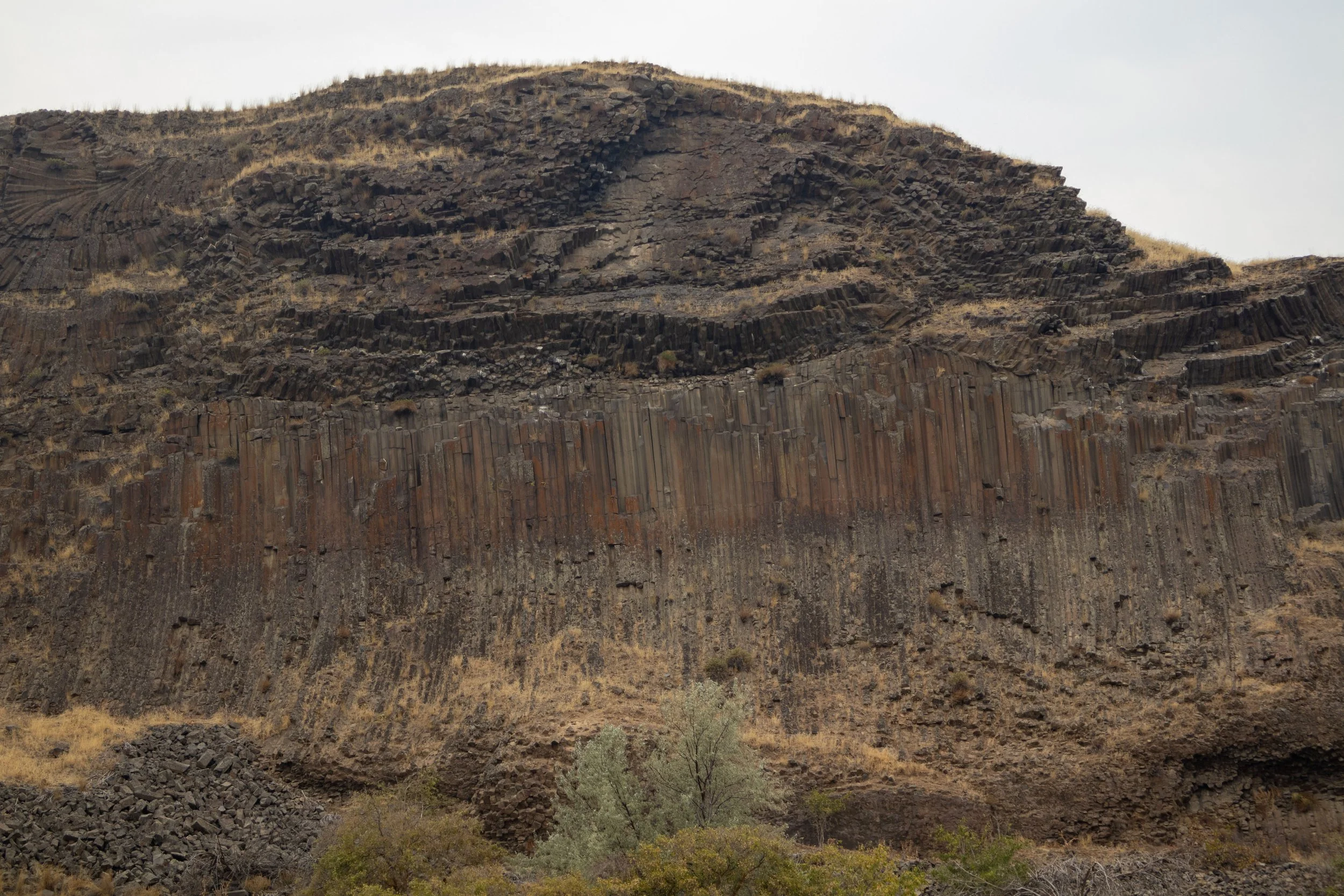I come from Tokyo, Japan, a city often referred to as the place that never sleeps. Walking in the dark, you never feel alone because of the constant glimmer of neon lights from every direction. Yellow from the street lamps, red and white from cars stopping and moving, green from the convenience stores, and blue, purple, and pink from ramen restaurants to sketchy maid cafes. They all combine to create a magical harmony, each sign glowing to catch your attention. Unfortunately, the neon light hides the shimmering lights above, erasing our connection to the Milky Way.
Landscapes are changing and disappearing. For my family, we chose to live in Tokyo and let go of our night sky. Yet, some are still fighting to protect their landscapes.
A little away from a port in Lewiston, Idaho, in the American West, I sit in the backseat of a jet boat along the Snake River, gazing at a particular mountain. It stands out from the others around me, which are dressed in brown tones with green sagebrush patches sprinkled along their sides. This mountain has a steep slope, curving like the inside of a bowl, formed by tall, thin, red-brown stones lined up so tightly that they seem stacked against one another.
On the jet boat, Roger Amerman, an ethno-geologist from the Choctaw Nation, stands comfortably wearing blue shorts. His eyes beam as he looks at the mountain. Roger focuses on understanding the deep connections between Native Americans and their natural environment. “You’ll see at the top of these columns, there’s like an octagon, kind of a roundish ovate structure,” Roger says, pointing at the hillside. In Nez Perce stories, these columns were created by beaver clawing at the mountain during a fight with Coyote. The red-brown, pencil-like stones, lined up like a brand-new box of yellow pencils, can be seen as claw marks of a beaver clawing its way up. “You’ll notice that in Native cultures, except maybe Mesoamerican, all our structures were round or ovate,” he continues. “And you see that in the base of teepees or long tents—they’re either round or ovate.” Roger raises his voice. “We learned about life. We learned how to build our structures, our architecture, from the land. [The land] talked to us.”
On the other side of the planet, 5,000 miles away from Tokyo, on the Nez Perce reservation, I gaze at a night sky shimmering with silver glitter through the opening of a traditional Nez Perce teepee. Information about the Star Festival, Tanabata recollects in my mind. Tanabata commemorates the annual meeting of Orihime and Hikoboshi, two lovers separated by the Milky Way but allowed to meet once a year by a magpie bridge. Orihime and Hikoboshi are stars, Vega and Altair, on either side of the Milky Way, with the swan constellation in the middle forming their bridge.
As I look at the shimmering sky, I recall a different kind of landscape, one filled with red and white lights that move slowly through the night. As a child, I thought these were stars, only to later realize they were airplane lights. I never saw Vega, Altair, the swan, or the Milky Way where I grew up. Now, staring at the stars from my sleeping bag, I am surrounded by a magical landscape, as if I’ve stepped into a fairy tale.
I look at Beaver Claw Mountain, noticing how the landscape preserves the memories of people. During the boat tour, Roger talks strongly, dire emotions floating through his voice. “The [Nez Perce] know a lot of these stories, and we hope that we retain them. This is… this is pillar stuff to the culture, to know this. And the Nez Perce are very lucky.” His voice hardens, carrying the sorrow of his great-grandparents and their ancestors, as well as the sadness of the Choctaw Nation.“We were displaced out of the Mississippi Valley into Oklahoma Territory. We can't put our hands on these sites anymore. We're impoverished.” The Choctaw Nation was forcibly removed from their homeland in 1830 and relocated to the Choctaw Nation Reservation in Southeastern Oklahoma created by the American Government. “I've talked to people. We have the legends, but the Nez Perce, Yakimas, Nixya'awii, Umatillas, they still are in pretty much their original homeland, and they are rich that they could tell the story.” While some tribes still live near remnants of their ancestral lands, most were not so fortunate. Many tribes were relocated far from their original homes, and some, despite federal recognition, do not even have a reservation. Roger looks at Beaver Claw Mountain, a place where the Nez Perce continue to tell stories in the same landscape their ancestors did. “Most of our tribes can’t do that anymore,” he says.
Later, I find myself looking at a real night sky, out on a remote mountain along the Washington and Oregon border. I can’t see my hands but can feel them outside my pockets. For the first time, I truly understand what pitch-dark means.I look up and see the brilliant Milky Way, its countless stars impossible to count. Among them, I spot Orihime (Vega) and Hikoboshi (Altair) on either side of the Milky Way, with the Magpie (Swan) bridging them. It’s not even Tanabata, but the stories of Orihime and Hikoboshi I heard from my parents and teachers, people who themselves had never seen the Milky Way, feel even more magical.
The culture of celebrating star festivals is fading, now mostly for families with young children. I wonder if the absence of the Milky Way is causing people to forget the stories, and eventually allowing a part of the culture to disappear.




